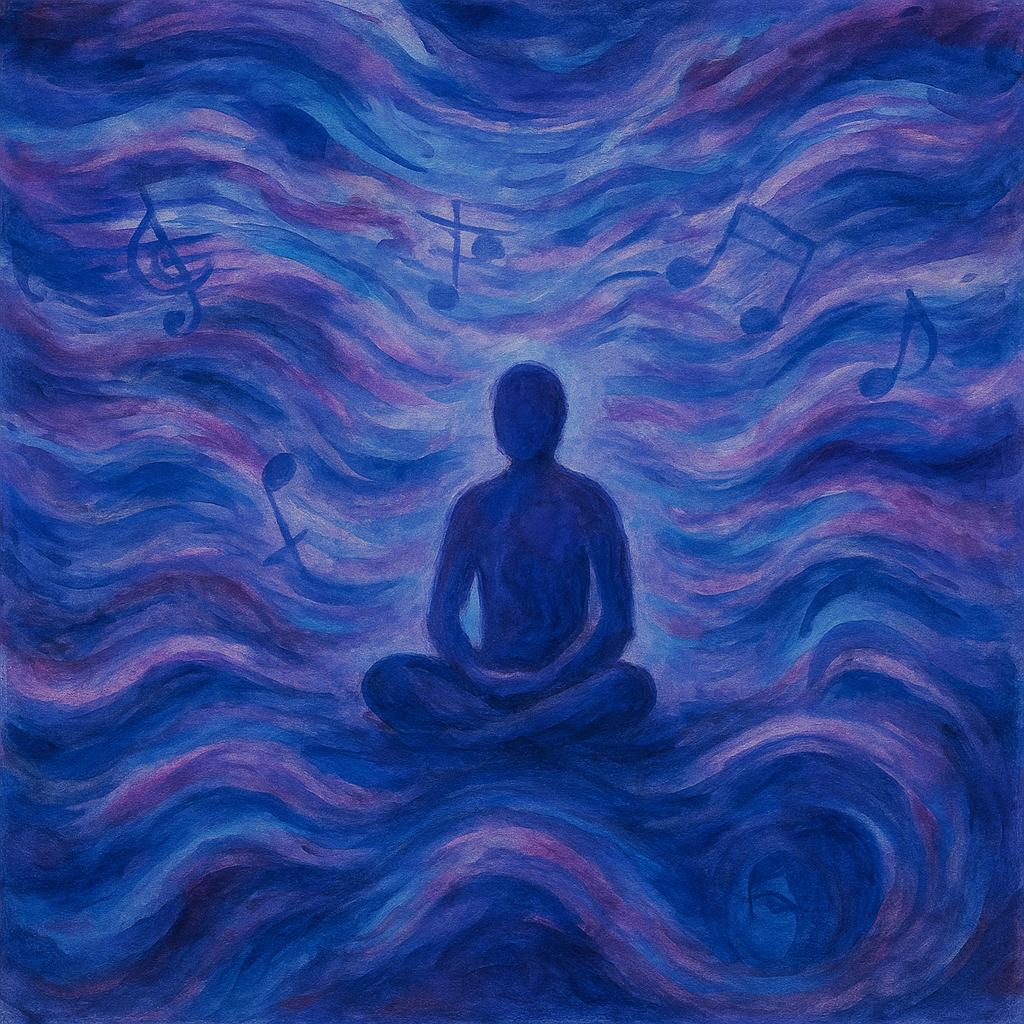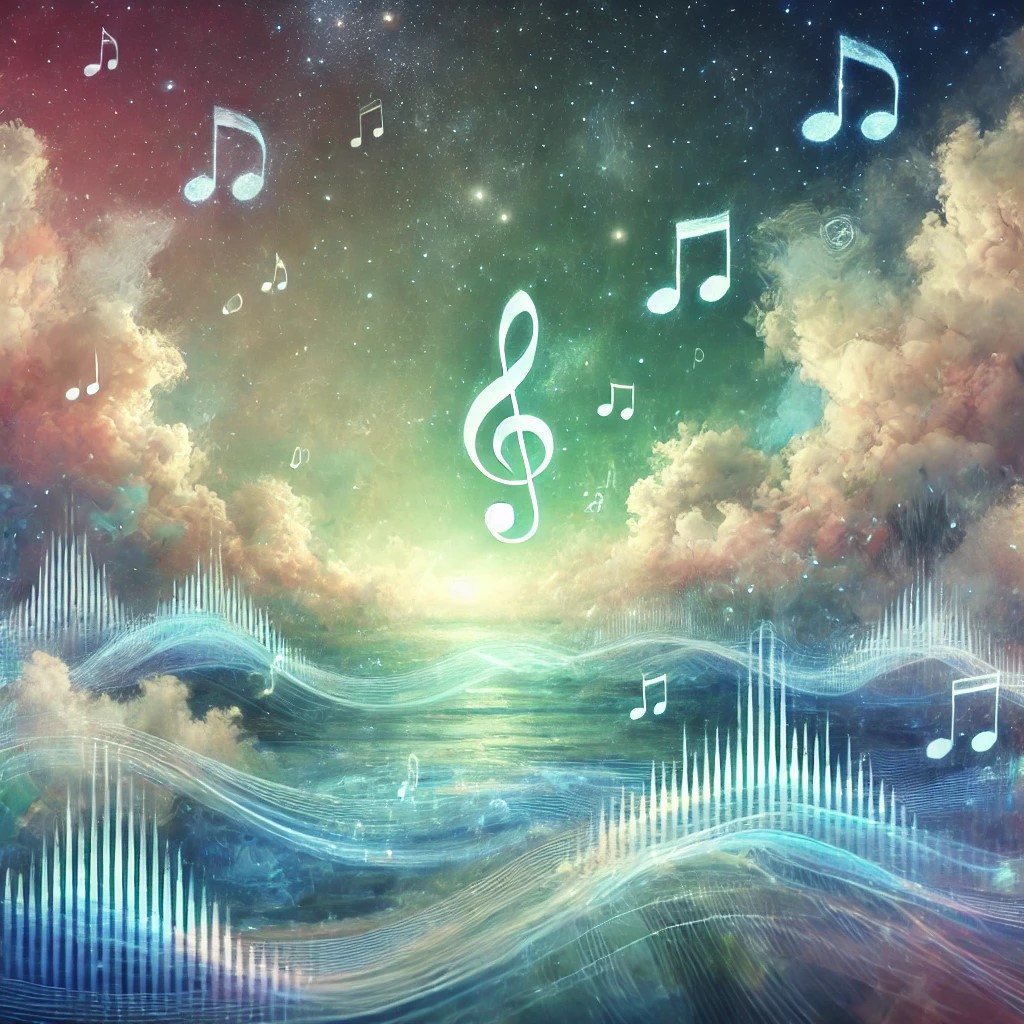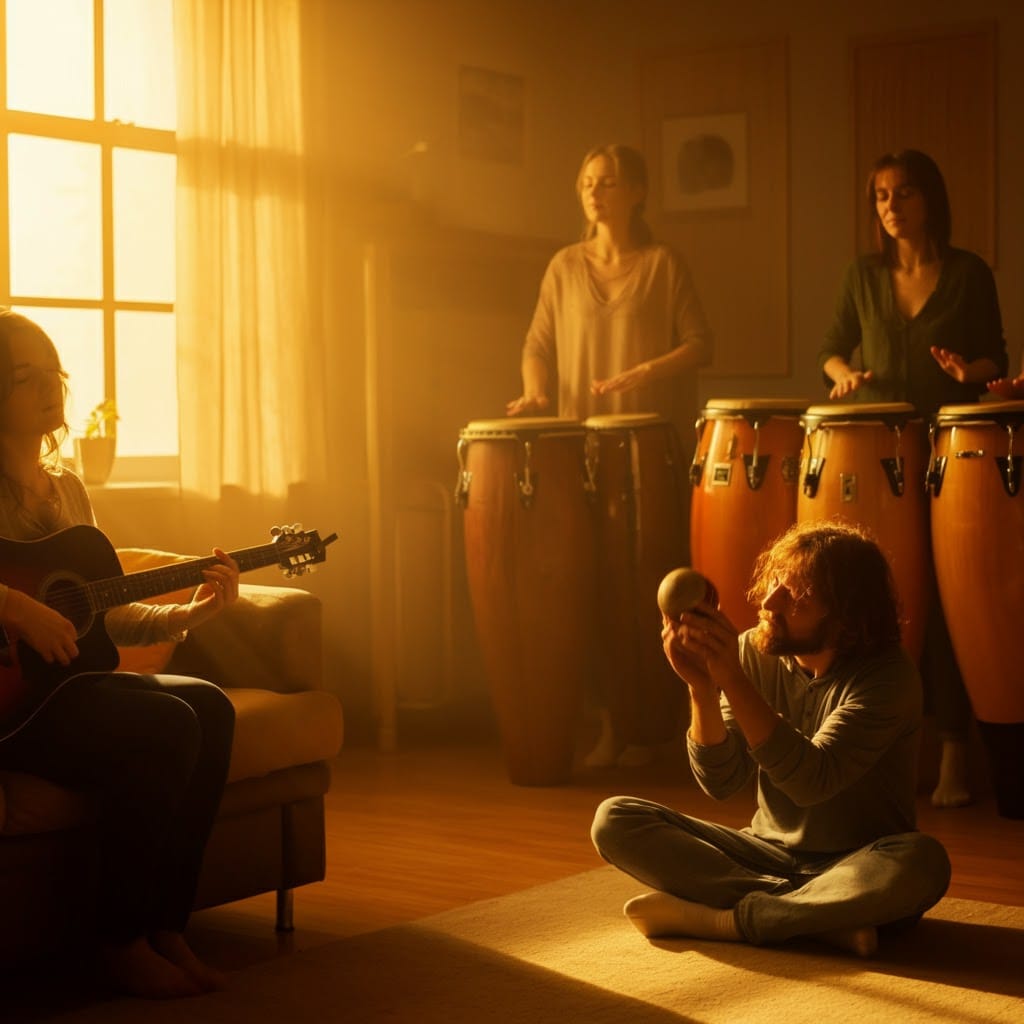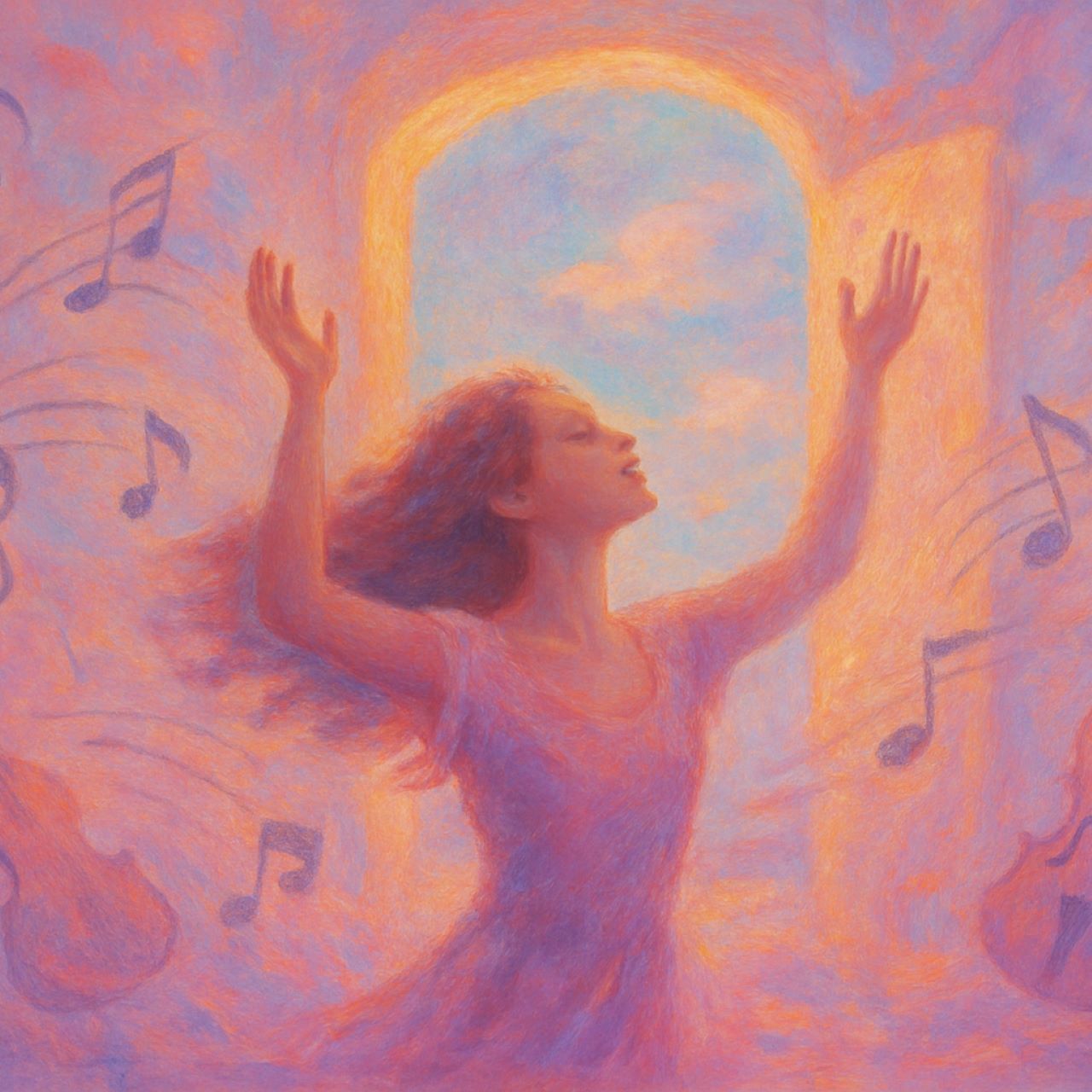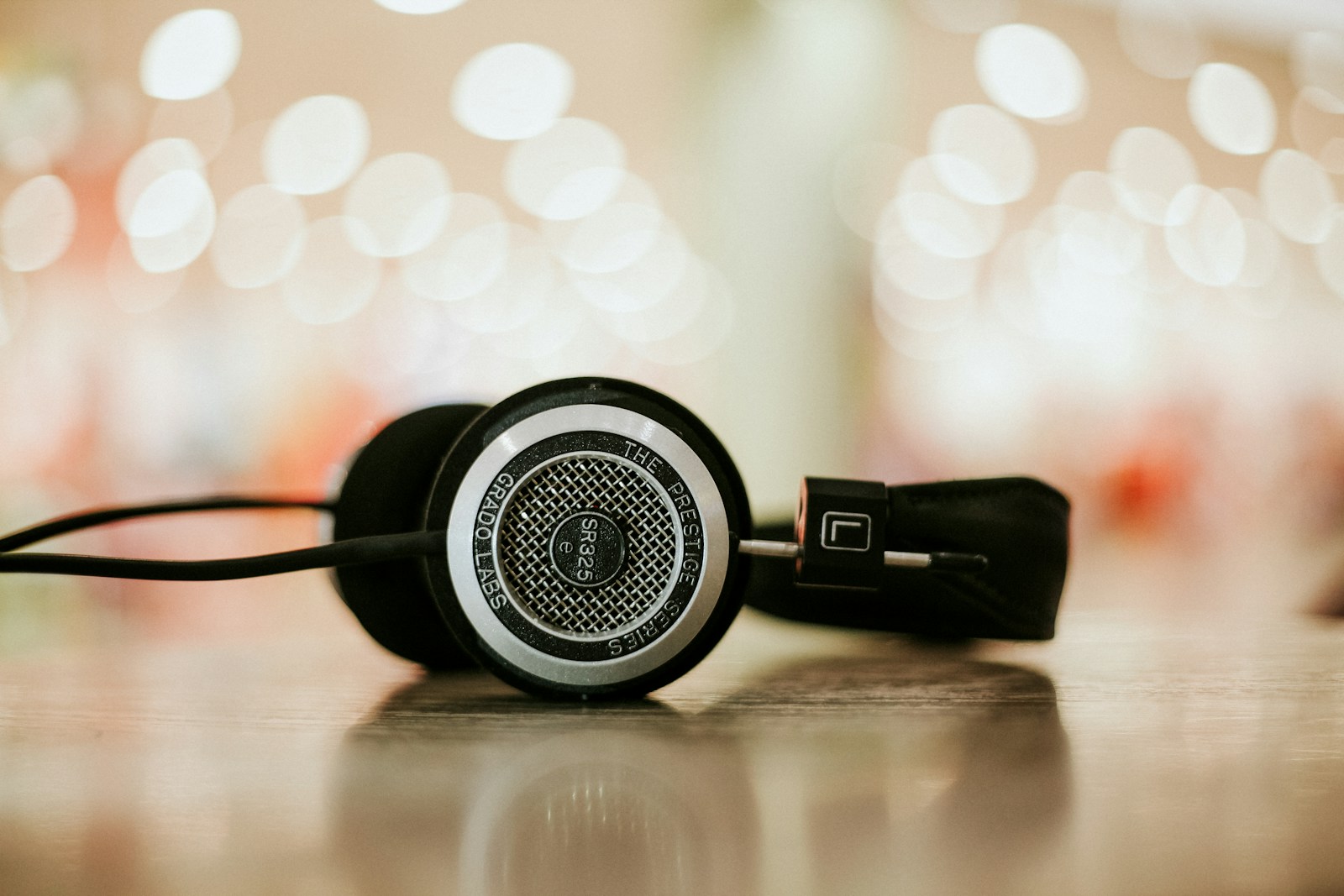In the morning, I stand before my piano, my gaze still half-lost in the twilight, and I recall those lines that honor the unknown: I do not know how this day will unfold. In that moment, every musical endeavor begins for me as a dialogue—an interplay between form and freedom in constant motion. I’ve learned that composing isn’t just about building rigid frameworks; it’s about consciously opening myself to processes that take shape in the moment, like a river that never stands still.
Each day brings new possibilities, a blank canvas waiting to be filled with sound. Before I let my fingers touch the keys, I often dwell in silence, allowing the moods and colors of the day to settle into me. Sometimes it’s the light falling through the window, altering the atmosphere of the room. Sometimes it’s the sounds from outside that guide me toward a direction. Inspiration comes from everywhere—from shelves filled with stories and wisdom, from paintings that hold silent narratives, and from memories resting deep in the crevices of my being.
When I improvise, I return to the essentials: the resonance of the room, the quiet rhythm of my own breath, each nuance of tone. I don’t draw predetermined lines but treat every gesture as both question and response. My hand on the keyboard becomes a listening instrument. I don’t just hear what the instrument offers—I listen inwardly, attending to impulses that rise from a place beyond conscious intention. In this way, music becomes a process that reinvents itself with each passing moment.
For me, music reflects the inner self—a way to express and process emotions that run deep. In moments of joy, it becomes light-filled and dancing, full of motion. In times of sorrow, it turns slow and deliberate, like a river flowing quietly through a silent landscape. Every feeling finds its voice in the sounds I choose, in how I connect and weave them. It feels as though I’m shaping a sonic landscape, a world to sink into and get lost within.
In composition, I sometimes follow the principle known in Japanese aesthetics as Jo-Ha-Kyū: a quiet introduction, an opening through variation, and finally a gathering momentum. I begin in silence, keeping motives vague, parameters open—perhaps the pitch of a phrase or the tempo of a passage. I don’t write to define, but to suggest. The score remains alive. When I return to it—or when others work with it—it becomes an ongoing dialogue between notation, space, and the shaping of sound.
Improvisation, to me, is one of the purest forms of musical expression. It calls for deep trust in the moment and in one’s own intuition. When I improvise, I surrender control and allow the music to carry me. It’s like setting out on a journey without knowing where it will lead. Every tone is a decision, every chord a fork in the road. Sometimes the music takes me through familiar terrain, other times into the utterly unfamiliar. This uncertainty is what makes improvisation so enriching.
I remember a session where I had written only fragments. The musicians approached the lines as if they were clues to a landscape whose contours we were to shape together. What I had left unwritten emerged from the interplay of voices. The score turned into an invitation, not a command. This conscious embrace of the unknown—of not knowing—is something I regard as a creative method. It opens space for surprise and allows sounds to surface that I hadn’t even imagined.
A central element in all this is silence—not as absence, but as a space of resonance. In many traditions, such as Japanese shō improvisation, the silence between tones is just as vital as the tones themselves. I practice listening for ma—that interval that carries tension, anticipation, and reverberation all at once. When I insert pauses into a composition, I place sound and silence into a dynamic relation. Silence becomes the canvas that lets each tone linger before it fades again.
In my practice, I also explore aleatoric procedures. I sometimes roll dice to determine parameters or incorporate external sources of randomness into the working process. These methods often yield sounds I would never have chosen consciously. They teach me to let go of control and welcome the unexpected. I don’t see these moments as disruptions but as enrichment—opportunities to question my habits and explore sonic possibilities beyond rational planning.
When I reflect on expectation and surprise, I think of the work of auditory psychologists who show how tension arises between what is anticipated and what actually occurs. In my pieces, I play with these mechanisms: a familiar phrase that suddenly breaks into unexpected harmony, or a rhythm that subtly defies the pattern the listener thought they recognized. In this way, I create soundscapes where new perspectives constantly emerge, demanding the listener’s full presence.
Music is not just personal expression—it’s also a bridge to others. Every time I perform, invisible threads form between me and the audience. Their reactions, their stillness, their breathing—these all shape the music and turn each performance into something unique. Sometimes I can feel how the music touches people, how it stirs emotions and awakens memories. This interaction is one of the most meaningful parts of making music. It feels as though we’re embarking on a shared journey—one that changes us all.
I view the interpretation of a piece as a continuous act of listening. Whether I’m playing my own work or that of another, I try to hear not just the notes, but what lies beneath them—the unspoken, the layered. Technique alone doesn’t suffice. It requires receptiveness to what arises in the space: to micro-variations between notes, to the interplay of sound bodies, acoustics, and silence.
During rehearsals, I deliberately set aside time for collective listening. We play fragments, pause, reflect, and begin again. This shared attention reshapes how we hear what we’ve played. Each musician becomes a co-creator, and the ensemble becomes a site of sonic exploration.
At the end of each session, there is no final destination—only the moment in which sound and silence resonate through the room. I don’t leave with the sense that a piece is finished. I feel that every performance is only one of many possible versions. The music continues to live on—in memory, in reverberations, and in what it stirs in each of us.
Music has taught me that life itself is a kind of composition—a constant becoming and passing, a weaving of sound and silence. Each day brings new tones and new pauses, new possibilities and new questions. And just as I lose and rediscover myself in music, I do the same in life. Every moment is a chance to listen, to learn, to be changed.
This is how I understand musical practice: as the ongoing opening of perception, as listening into uncertainty, and as participation in a process that continually reveals new aspects of the self. Music doesn’t begin with the first sound; it begins with the first act of listening. And it never truly ends, because it’s reborn with every act of hearing.
With each passing day, I become more aware of how deeply music shapes and enriches my life. It’s not merely a profession—it’s a way of being, a way of understanding the world. It teaches me patience, humility, and openness. It reminds me that beauty often lies in what wasn’t planned—in the rests between notes, in the silences between words.
And so I return to my piano each morning, ready to be led by music, ready to listen and to learn, ready to rediscover myself and the world anew. For in music, I find not only expression, but—alongside my family—comfort, joy, and a profound sense of connection with all that is.

